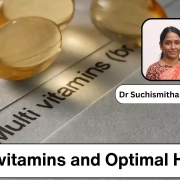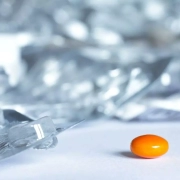MGM Medical College Associate professor, Dr Kaushik Bhattacharya conferred with Certificate of Excellence, Outstanding ASI member of the year 2023

Kishanganj: Dr Kaushik Bhattacharya from Siliguri was recently conferred with a prestigious Certificate of Excellence by the Association of Surgeons of India (ASI) for being the reviewer with the largest amount of manuscripts reviewed for the Indian Journal of Surgery and the author with the most cited and downloaded article- “Chat GPT in surgical Practice- a new kid on the block”. This is the third accolade that Dr Bhattacharya has been awarded for publication in a medical journal.
Dr Bhattacharya was further awarded the “Outstanding ASI member of the year 2023” by the President and Executive committee of the association in recognition of his outstanding achievements and exceptional works.
On receiving the prestigious awards from ASI President Dr Sanjay Jain during the Annual Conference of the 83rd Annual Conference of the Association of Surgeons of India (ASICON 2023) held at Vizag on 14th December 2023, Dr Kaushik Bhattacharya thanked the Editor in Chief of the Indian Journal of Surgery Dr Sandeep Kumar, the Editors Dr Satish Dharap and Dr Mallika Tewari. He expressed his gratitude to the entire Editorial Board of the Indian Journal of Surgery for this honour.
Currently, Dr Kaushik Bhattacharya is serving as an Associate Professor of the Department of Surgery at Mata Gujri Memorial Medical College Kishanganj in Bihar. He is a Member of the Editorial Board of the Indian Journal of Surgery and has more than 170 research publications in various International and National medical journals.
Dr Kaushik Bhattacharya completed his MBBS from MGM Medical College, Jamshedpur in 1992 and got his MS in General Surgery degree from SCB Medical College, Cuttack in 1997 as well as his DNB (General Surgery) in 2000.
Subsequently, he worked as an Assistant Professor in General Surgery at Sri Ramachandra Medical College and Research Institute, Chennai till 2003.
He was awarded the Mahatma Gandhi Gold Medal in Forensic Medicine and Toxicology and became a Member of the National Academy of Medical Sciences in 2002. Later. he received the “Metrogyl Travelling Fellowship 2001” by the Indian Association of Gastrointestinal Endo-Surgeons, the “Novartis Transplant Fellowship 2002” by the Indian Society of Organ Transplantation and the “ASI & J & J Golden Independence Conference commemorative Ethicon Travelling Fellowship in the Laparoscopic surgery 2003” by the Association of Surgeons of India.
Back in 2020, he also received the International Award in Medical Writing on Social Media from the Postgraduate Medical Journal UK. Thereafter, Dr Bhattacharya was awarded the Dr Deepak Banerjee Award for the best published in the Journal of Indian Medical Association by the IMA Headquarters in 2021 and the Best Researcher Award by the Indian Association of Gastrointestinal Endosurgeons in 2022.
Powered by WPeMatico



















